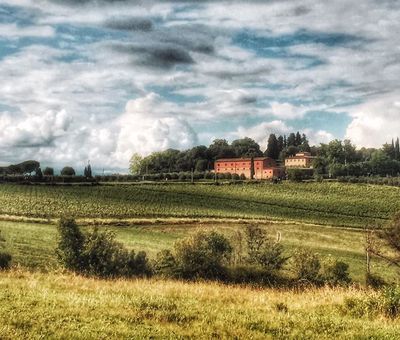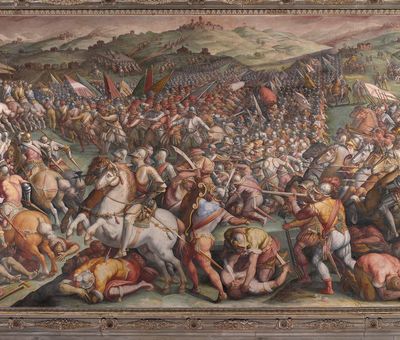The Battle of Marciano
"At ten o'clock in the morning, when the sun was already high over the Val di Chiana, the forces of Piero Strozzi were retreating from hill to hill." So was the epilogue to the Battle of Scannagallo, known also in the history books as the Battle of Marciano. It was a bloody encounter, with the Florentines dealing a crushing blow to Siena, which surrendered in April 1555 and thus left much of Tuscany, soon to be unified as a region, under Medici control. It is not fanciful to say that history was written on these fields on 2 August 1554, not only from an Italian, but also a European point of view. Since 2001, the Cultural Association of Scannagallo has held an annual historical re-enactment of the battle, either on the last weekend of May or 1 June.
The Vasari Code
The Battle of Marciano was immortalised by Giorgio Vasari in his famous fresco on the eastern wall of the Salone dei Cinquecento in the Palazzo Vecchio, Florence. It is a dramatic depiction of the imperial-Medici cavalry charge and the chaotic retreat of the Franco-Sienese forces into the hills. At the centre, opposing infantry units clash, while the Marciano Castle pokes up in the background on the right, and the Castle of Lucignano at the back. The fresco is famous not least for the two words cerca trova (seek and find) written on one of the flags, which baffles us even today. We are certain that they are Vasari's words and that they recall a motto of the Florentine forces, but the suggestion, maybe, is that they refer to something hidden behind the walls of the Salone: namely, Leonardo da Vinci's The Battle of Anghiari.
A fortress that was needed no more
Florence's victory over Siena was momentous not only for the belligerents, but also for the history of Marciano della Chiana. The fortress of Lucignano is an example of this. It was built at the behest of Cosimo I and in 1556 it was entrusted to a military engineer, Bernardo Puccini, who was tasked with turning it into a truly impregnable stronghold, able to resist the ever-more-common artillery. The two bastions around which it was constructed ensured its control of the surrounding territory. But by 1556, with the Battle of Marciano decided, Siena had surrendered and the castle's defences were no longer so pressing. Thus work was interrupted, and after centuries of abandonment efforts have only recently been made to restore the castle.





